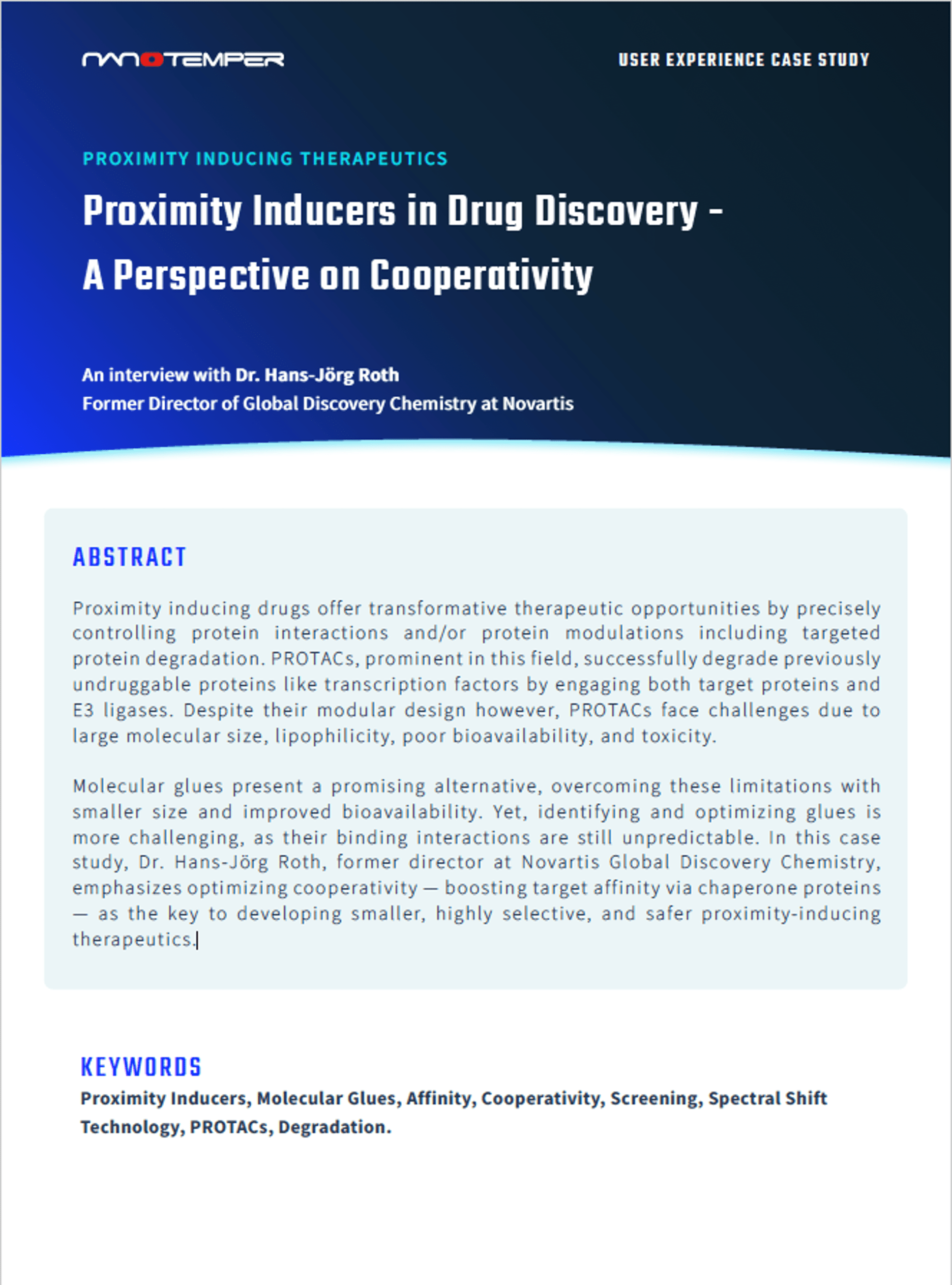
Protein degraders are getting a lot of attention for being a new and promising modality to treat diseases such as cancer or Alzheimer’s disease. Rather than inhibiting the function of a protein, protein degraders selectively target proteins for degradation and removal from the cell, which is a more permanent solution for disease treatment. A proteolysis targeting chimera (PROTAC) is a protein degrader that binds specifically to both an E3 ubiquitin ligase and a target protein. Recruitment of the E3 ligase to the target protein results in its destruction via the ubiquitin proteasome system (UPS). The key to robust rational design of PROTACs is to understand their structure-activity relationship throughout the degradation pathway.
If you are developing a protein degrader, here are four key questions to ask that help you understand if your protein degrader is effective.
1. Is my PROTAC cell-permeable?
For a PROTAC to do its job, it has to cross the cell membrane to engage with the specific E3 ligase and the target protein inside the cell. However, with their high molecular weight (MW > 800 Da) and all of their hydrogen bond donors and acceptors, PROTACs have relatively low membrane permeability. The good news is, PROTACs can be designed to be more membrane-permeable by understanding and improving their physicochemical properties. Specific assays have been designed to help with this – like Caco-2 cell permeability assays, competitive E3 engagement assays, and chloroalkane penetrating assays.
2. Does my PROTAC form a ternary complex?
Once inside the cell, the degrader first binds with either the specific E3 ligase or its target protein to form a binary complex. Then, the third component binds to it, and they form the ternary complex. Ternary complex formation is essential for target ubiquitination and subsequent degradation, making it perhaps the most critical step of the protein degradation pathway. So it’s no surprise that its optimization is a major focus for researchers developing PROTACs.
Several studies show that the PROTAC’s ability to degrade its target protein can be predicted by the ternary binding affinity and cooperativity. The characterization of the ternary complex formation with bioanalytical tools provides valuable feedback for PROTAC development and rational lead optimization. If you are characterizing the ternary complex formation, your assay conditions must preserve the binary complex while you’re measuring the binding of the third component. As a result, you have to choose a bioanalytical method that allows for precise control of the assay conditions and for accurate quantification of both low binary binding affinities and high ternary binding affinities.
3. Does my target become ubiquitinated?
Once a stable ternary complex is formed, the target protein becomes poly-ubiquitinated by the UPS. Here, a single ubiquitin moiety is attached to the exposed lysine residue on the target protein, followed by the conjugation of additional ubiquitin molecules leading to the elongation of the ubiquitin chain. These steps can be tracked by performing ubiquitination assays in live cells, utilizing the cell’s own machinery to detect ubiquitination under native conditions. Cell-free systems, such as immunoblotting of immunoprecipitated proteins or mass spectrometry can also be used.
4. Does the ubiquitination drive the protein to be degraded by the proteasome?
Once the target protein is ubiquitinated it can be recognized, recruited, and degraded by the 26S proteasome. This process, known as proteolysis, results in the hydrolysis of one or more peptide bonds in the protein. To be considered a target protein degrader, the PROTAC must degrade the target protein completely. Methods such as western blot or mass spectrometry-based proteomics – able to detect intracellular protein levels – are used to evaluate the success of the degradation following PROTAC treatment.
Targeted protein degradation is an exciting new direction in the field of drug discovery. When exploring new degrader compounds, make sure you ask yourself these questions. They will help you address the key steps of the degradation pathway and design effective degrader compounds.
Check out this resource to learn how Monolith helps you facilitate the rational design of your PROTACs.













